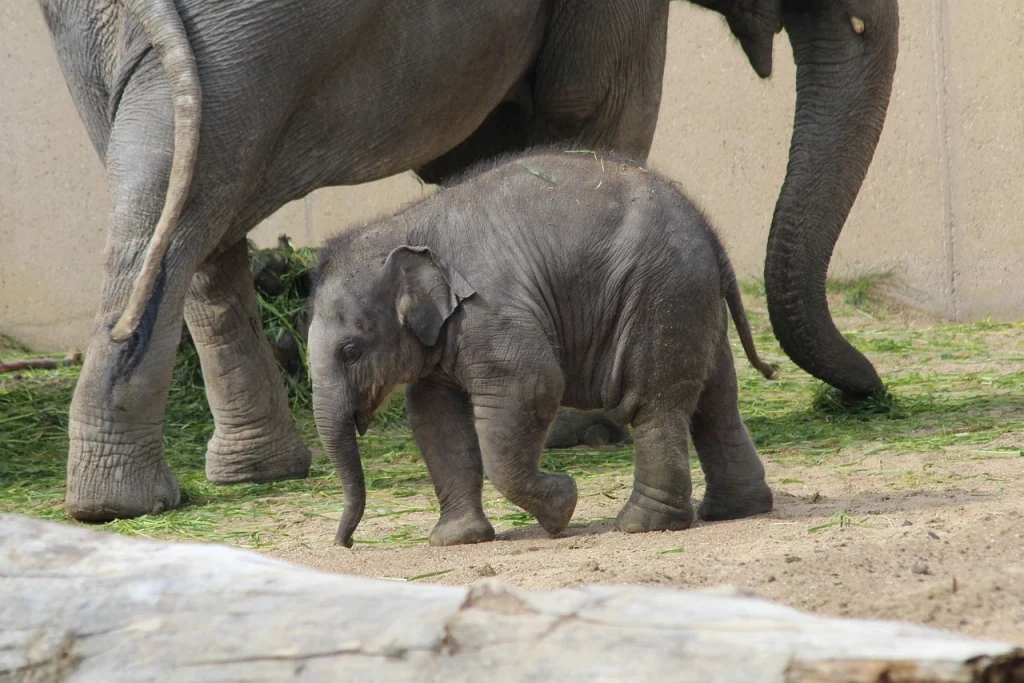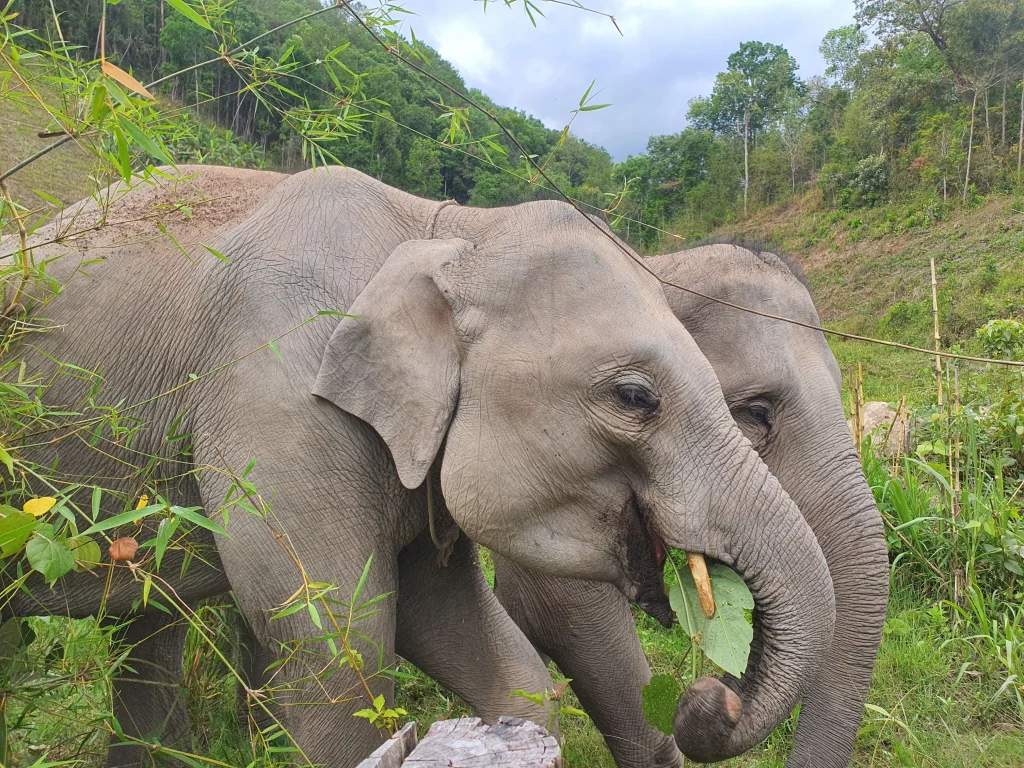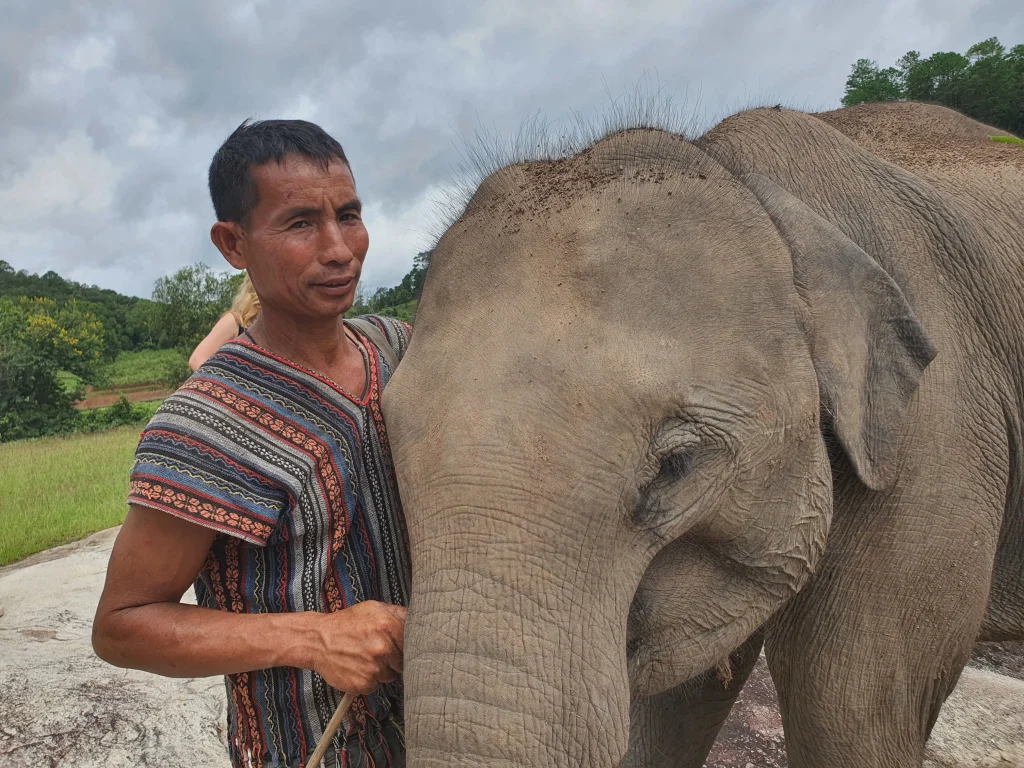
When we think of elephants, we often imagine large, powerful animals with immense strength. But behind this impressive image lies a fragile beginning—one that requires deep care and protection, especially during the early stages of life. Though relatively large at birth compared to other animals, young elephants are still physically vulnerable and heavily dependent on their mothers and the support of the herd to survive and thrive in their natural environment.
At Le Cher Elephant Home, an elephant sanctuary in Chiang Mai dedicated to natural and ethical elephant care, we believe that supporting elephants from pregnancy through their first year of life is the cornerstone of true conservation. By providing pregnant elephants with a peaceful environment, a nutrient-rich diet, and ample space to roam, we lay the foundation for strong and healthy new lives—essential for the long-term survival of the species.
A Long Pregnancy: The First Chapter

Elephants have the longest pregnancy of any land mammal, lasting between 20 to 22 months—almost two full years. During this time, the mother requires extra energy and nutrition to nurture the developing life inside her. The fetus gradually forms complex systems—from the nervous system and muscles to bones and internal organs. Proper care during this stage is vital, as it directly affects the health and strength of the newborn.
Birth: A Miracle of Nature
The birthing process is one of the most awe-inspiring events in the animal kingdom. Typically occurring at night—when threats from predators are minimal—the mother gives birth while standing, allowing the calf to drop gently to the ground. A newborn elephant weighs around 90–120 kilograms and stands approximately one meter tall. Despite its size, the newborn is still fragile and requires constant supervision during the first few hours.
Soon after birth, the calf instinctively tries to stand within one to two hours. Its primary goal is to nurse from its mother. The first milk, or colostrum, is rich in natural antibodies, helping to protect the newborn from infections during this critical time. At Le Cher Elephant Home, our caretakers observe quietly from a distance to allow a natural bonding process between mother and calf, ready to assist only when necessary.
The Infant Stage: The Herd as a Family
From the moment of birth, the young begin to explore their world slowly under the close watch of their mother. But care does not fall solely on her shoulders. In the wild, elephant herds are structured social groups, and older females—especially those without offspring—often act as caretakers, or “allomothers.” These companions help protect, guide, and nurture the young, forming a communal upbringing that strengthens emotional and behavioral development.
During this stage, the young learn by watching and imitating—how to use their trunks, splash in water, spray dust, follow the herd, and communicate through gestures and vocalizations. Growing up in a calm, stable environment helps them understand social hierarchy, adapt to their surroundings, and develop resilience—key foundations for becoming strong and balanced adults.
Hidden Threats: The Fragility of Early Life
Despite their seemingly sturdy appearance, young elephants face numerous dangers in their first few years. Several health threats are particularly common:
- Acute Diarrhea
Without proper colostrum, the young are highly susceptible to bacterial or viral infections, especially in the digestive tract—sometimes leading to death within days. - Respiratory Infections
Often caused by viruses or bacteria, these are more frequent in cold, damp conditions. Environments with dirty or cramped enclosures pose greater risks. - EEHV (Elephant Endotheliotropic Herpesvirus)
A highly fatal virus affecting elephants under 8 years old in Asia. Symptoms appear quickly—such as pale tongue and high fever—and can result in death within 72 hours if not treated immediately. - Malnutrition
If the mother lacks proper nutrition or if the calf is separated too early, growth slows, immune systems weaken, and vulnerability to disease increases. - Accidental Injuries
Young elephants in poorly maintained areas with slippery or uneven ground may suffer leg injuries or fractures.
Every Step is Hope

Every small step taken by a young elephant is a symbol of hope—not only for its herd but for the future of the entire Asian elephant population. The ability to stand, walk, play, and learn in a safe and nurturing environment is priceless in a world filled with threats like habitat loss and disease. When given a strong start—supported by their mothers, the herd, and humans who understand and respect nature—these young ones can grow into resilient adults, playing a vital role in maintaining the balance of forest ecosystems.
Conclusion
The early years of an elephant’s life are more than just a stage of growth—they represent the future of the species and the heart of meaningful conservation. At Le Cher Elephant Home, we believe that when young elephants are raised in a safe, natural, and loving environment—with support from both their mothers and the herd—they grow into strong individuals and symbols of hope for the forest.
Come and discover the magic of early life in the wild. Witness how we care for elephants with love and integrity at Le Cher Elephant Home—an elephant sanctuary in Chiang Mai where life begins with compassion.
Start your journey today.
Just search for “Le Cher Elephant Home” or book directly through our website → [https://lecherelephanthome.com/]
Related Topics:
Le Cher Elephant Home
83 Moo 2 T.Mae Win A.Mae Wang Chiangmai 50360
Contact Us
lecherelephanthome
@gmail.com
PHONE NUMBER
(+66)910763551
Pingback: Chiang Mai & Elephants: A Shared History